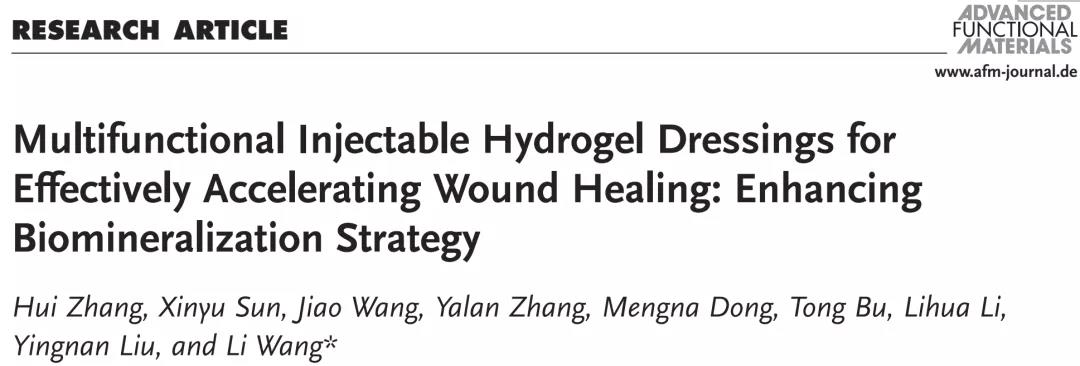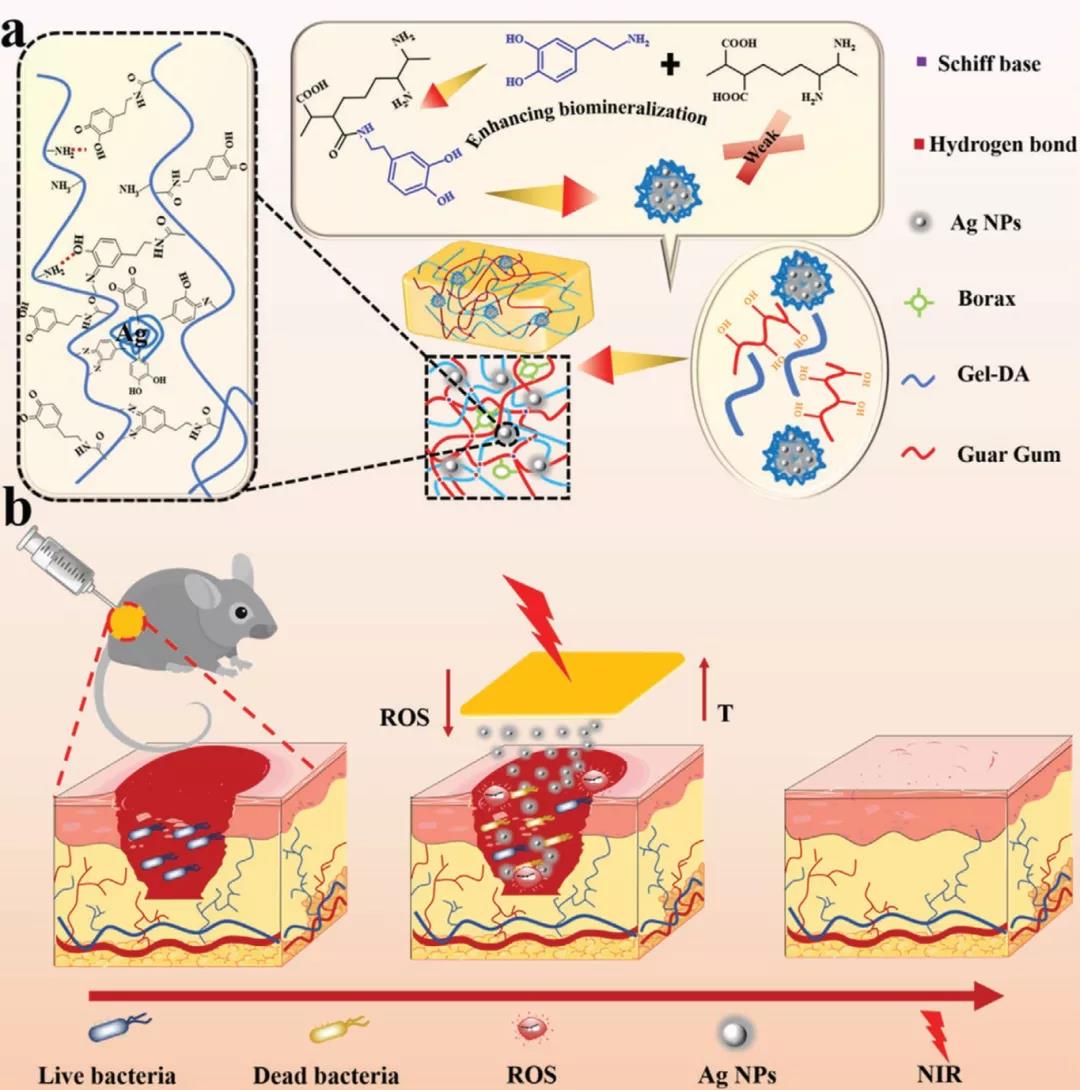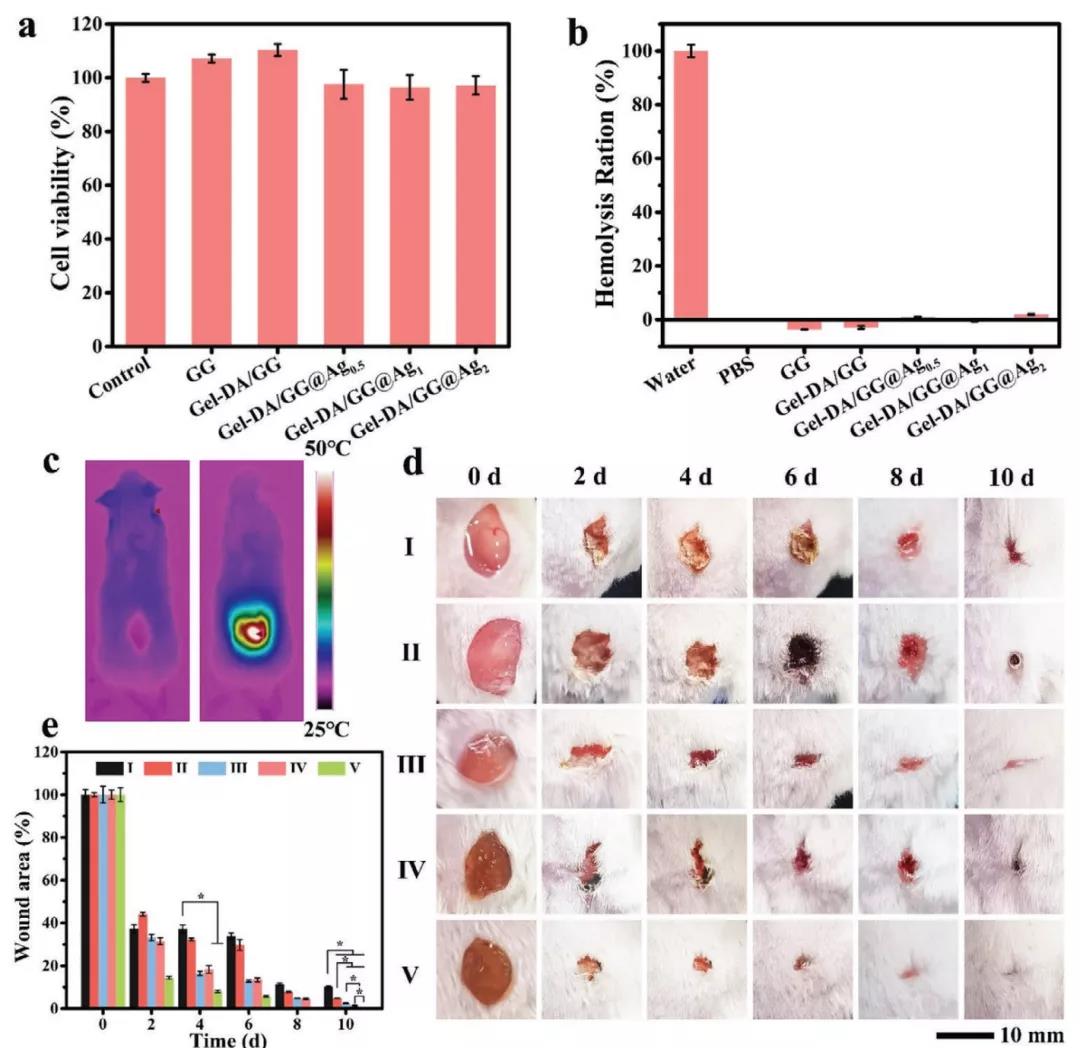
hotline:
17715390137
Tel/Wechat:
18101240246 (Technology)
0512-68565571
Email:mxenes@163.com (Sales Engineer)bkxc.bonnie@gmail.com
Scan the code to follow or search the official account on WeChat:
2D Materials Fronrier After paying attention,
click on the lower right corner to contact us,
Enter enterprise WeChat.
Professional Services Online

As the first line of defense of the immune system, the skin is the largest and most fragile tissue. It is easily damaged to form wounds and become infected by bacteria. Therefore, it is very important to prepare a type of multifunctional dressing to avoid secondary injury and accelerate wound healing. At present, researchers have designed various wound dressings such as membranes, sponges, aerogels, cold gels, modified gauze and hydrogels to accelerate the reconstruction of skin wound tissues. Among them, hydrogel has attracted wide attention due to its structure similar to biological soft tissue.

However, traditional hydrogels have no injectability and self-healing properties, and cannot completely cover irregularly-shaped wounds. Therefore, the development of an injectable multifunctional wound dressing hydrogel is of great significance to promote the reconstruction of injured tissues. To achieve this goal, researchers combined metal-based inorganic nanomaterials with organic macromolecular materials such as proteins through biomineralization strategies, and designed and prepared a series of multifunctional nanocomposite hydrogels. Among them, gelatin (Gel) is one of the most attractive animal proteins in biomedical applications. It contains a variety of amino acid residues, including glycine, proline, hydroxyproline and tyrosine, which makes gelatin useful as The biological template reduces silver ions in situ to generate stable silver nanoparticles (Ag NPs). However, the biomineralization ability of gelatin is far from enough. Researchers have found that the catechol group has a strong reducibility, and introducing it into the gelatin framework is expected to improve its biomineralization ability. Based on the above research, Professor Wang Lis team from Northwest A&F University proposed a strategy to enhance biomineralization. They developed and prepared a multifunctional Gel-DA/GG (guar gum)@Ag hydrogel through the modification of dopamine. , Can be used to treat focal infections. As shown in Figure 1, the gelatin indoleamine conjugate (Gel-DA) was synthesized by grafting dopamine hydrochloride onto the main chain of gelatin. Gel-DA was used as the biomineralizer to prepare the precursor of Gel-DA@Ag NPs. Then, guar gum and boric acid are added to the precursor solution of Gel-DA@Ag NPs to form Gel-DA/GG@Ag hydrogel.

Scheme1 Schematic diagram of preparation of hydrogel and its application in wound repair
The prepared hydrogel has excellent synergistic bactericidal effects of light and heat and silver nanoparticles. When the hydrogel is exposed to a near-infrared (NIR) laser at 808 nm, the local temperature increase caused by the photothermal effect of the hydrogel can remove more bacteria attached to the wound; in addition, these hydrogels have Excellent remodeling, injectability, self-healing and antioxidant properties. Furthermore, the in vivo evaluation of wound closure proved that the hydrogel can fill unformed wounds well, and exhibits a good anti-infective effect through the inherent antibacterial properties of Ag nanoparticles and the photothermal properties of the hydrogel, as shown in Figure 1. Shown.

Figure 1 a) The survival rate of NIH-3T3 cells treated with different hydrogels. b) Hemolysis rate of red blood cells treated with different hydrogels; c) Photothermal images of mice treated with Gel-DA/GG@Ag1 hydrogel before and after near-infrared irradiation (2 W cm-2,3 min). d) Optical photographs of different treatment methods for wounds infected by Staphylococcus aureus. e) The wound area of each group.
Conclusion: A new, remodelable, injectable, self-healing and biocompatible multifunctional wound dressing that integrates anti-oxidation, photothermal antibacterial and wound healing applications has been designed and prepared; this hydrogel dressing It can effectively release silver ions, rapidly increase the local temperature under 808 nm near-infrared irradiation, and significantly enhance the synergistic antibacterial performance against Escherichia coli and Staphylococcus aureus; in addition, the hydrogel has good antioxidant activity and can clear the wound microenvironment The ROS has a positive effect on the wound healing process. Finally, the enhanced biomineralization strategy proposed by the author provides a new solution for the development of organic and inorganic hybrid multifunctional hydrogels.

| Reminder: Beijing Beike New Material Technology Co., Ltd. supplies products only for scientific research, not for humans |
| All rights reserved © 2019 beijing beike new material Technology Co., Ltd 京ICP备16054715-2号 |